Platicodon belongs to the bellflower family. It includes only one species that in the wild grows on mountain slopes and in deciduous forests. Platicodon (or as it is called grandiflora) is a herbaceous plant that has been growing for several years. We will figure out how to properly plant and care for it in the open ground.
Content
Varieties of platicodone
The plant has a well-developed root system and a high stem, which densely covers the foliage. On the stem during flowering, up to 5 rather large bells are formed, whose petals are covered with veins. This can be seen in the photo.
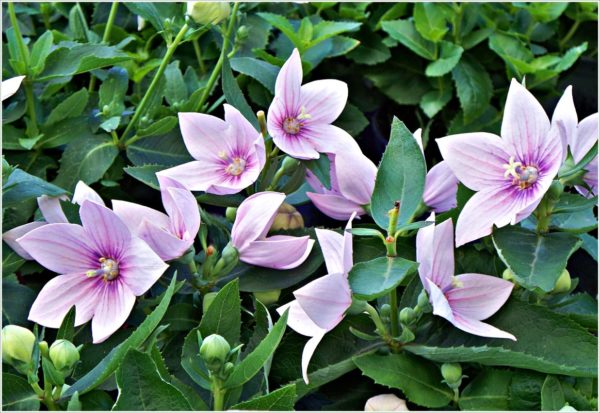
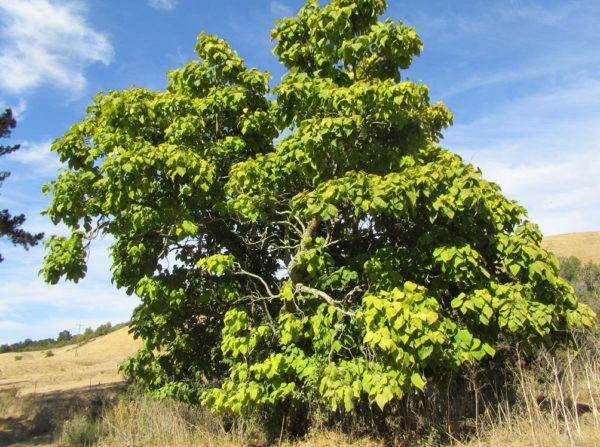 You may be interested in:
You may be interested in:It is a plant variety that affects the color of flowers, which can range from white-pink to blue-violet gamma.
But regardless of the plant variety, veins are always clearly marked on the petals. By the number of petals, flowers can be simple, double or double (in two rows).
The variety affects the parameters of the plant itself, that is, the height and branching of the bush. There are both tall and dwarf ones.
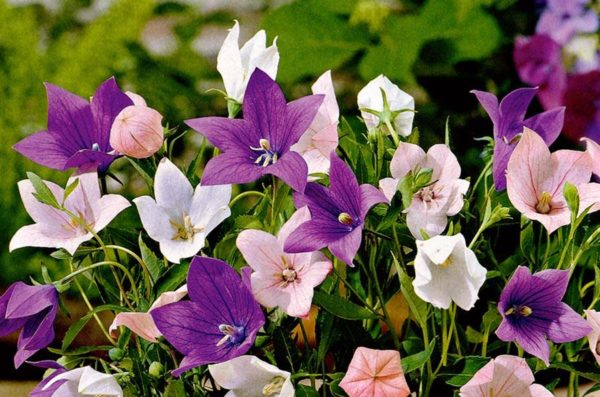
Planting a plant
Platicodon in planting and care in the open ground is unassuming. Even the photo shows that the plant is maximally adapted to wild conditions.
Young grandiflora in the soil can grow only in cases where there is no threat of winter frost. That's when flower seedlings are planted. Wintering plants comfortably even at prolonged low temperatures.
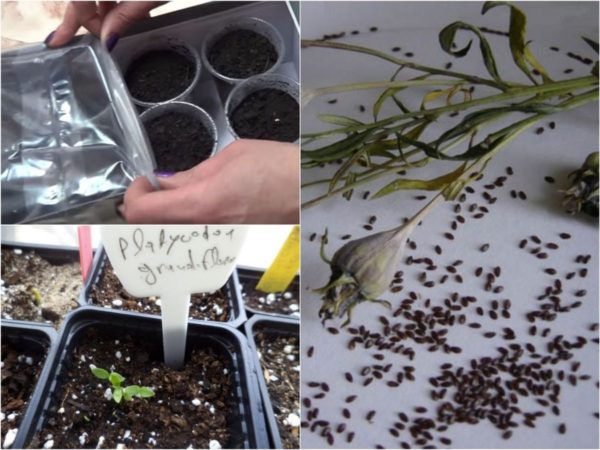
Seed planting time varies by region. The farther south, the earlier they should be planted - for this, mid-late March is ideal. For the middle strip, it is better to sow the plant in mid-April.
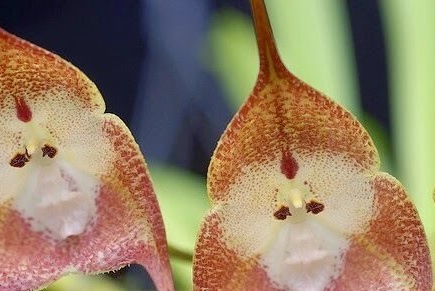 You may be interested in:
You may be interested in:For planting, you can buy in the store soil for ordinary flower plants. To make it yourself, you need to mix humus, sand and peat in equal proportions. When sowing, it is necessary to deepen the seeds by 3-4 mm.
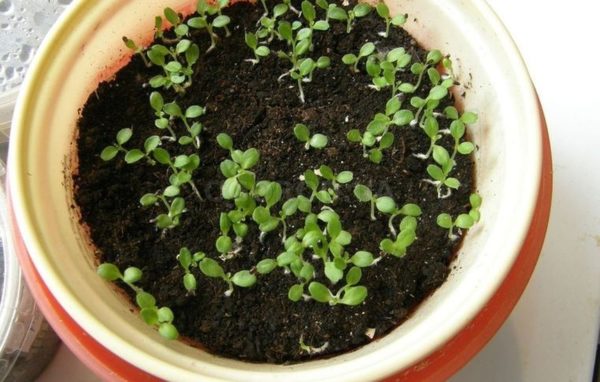 The box with the seeded material must be kept at room temperature. The most comfortable will be + 20-24 ° C. Watering is carried out regularly; excessive drying of an earthen coma should not be allowed.
The box with the seeded material must be kept at room temperature. The most comfortable will be + 20-24 ° C. Watering is carried out regularly; excessive drying of an earthen coma should not be allowed.
Shoots appear after about 2-3 weeks. And as soon as this happens, you need to move the box to a cooler place - the optimum temperature will be +16 ° C.
Under such conditions, it is necessary to withstand the young plants of Platicodon further until planting in the open ground is required, where many years of growth and care will take place.
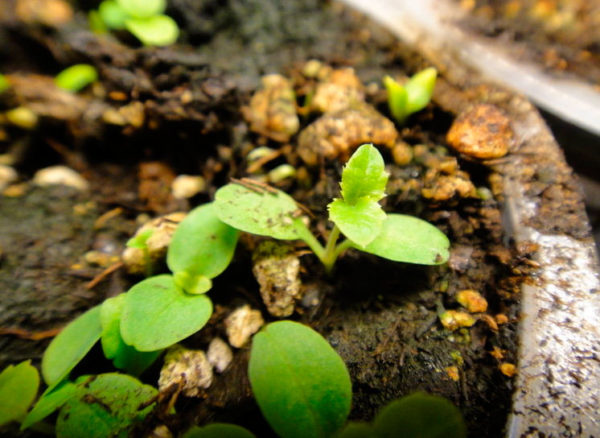
Care for young seedlings
When the first sprouts of the wide-bell appeared (as plankodon is also called in the common people), watering should be carried out regularly. But as young shoots grow, the amount of introduced water needs to be reduced slightly.
In addition, it is very important to carefully loosen the ground.This must be done so as not to damage the young shoots.
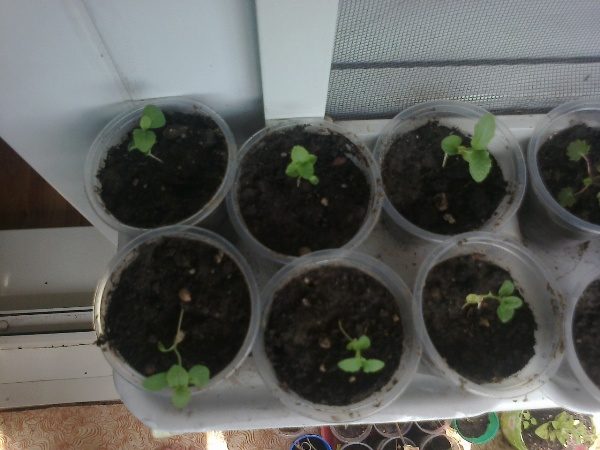
When can I plant a plant in the fall? In the still not frozen ground. But in this case, the seeds brought into the soil must be covered with a thick layer of compost in order to avoid freezing. After planting platikodon in open ground in this way, he will not need care until spring.
Choosing a place to land
The plant will thank with abundant flowering if you choose for it an open sunny place that is well ventilated, but without strong drafts. In principle, a wide bell will grow well in partial shade.
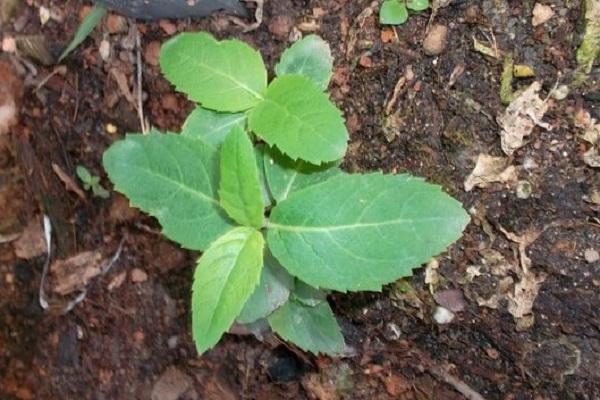
The bell has a fairly deep root system, which is located strictly vertically. That is why it is undesirable for groundwater to lie close to the surface, since in this case the delicate root system will suffer all the time, and the plant may die.
It is worth considering that in one place the bush can grow up to 10 years, without requiring either a transplant or additional care, except for shelter for the winter.
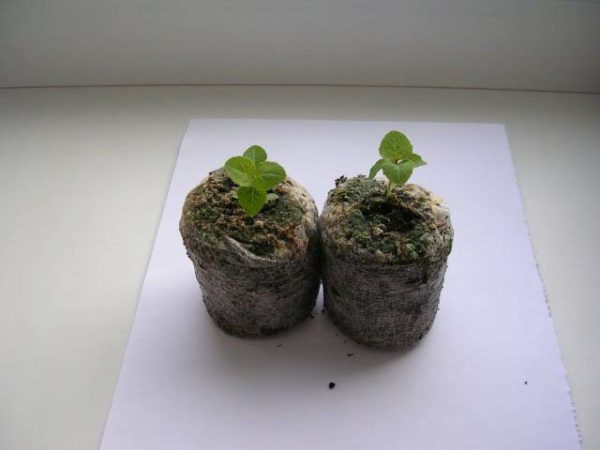
Preliminary soil preparation for planting
In about 2 weeks, or even more, it is necessary to prepare the site for planting platikodon seedlings. To do this, carefully dig the earth to the depth of a bayonet shovel. At the same time as digging, wood ash and mineral fertilizers are introduced into the soil.
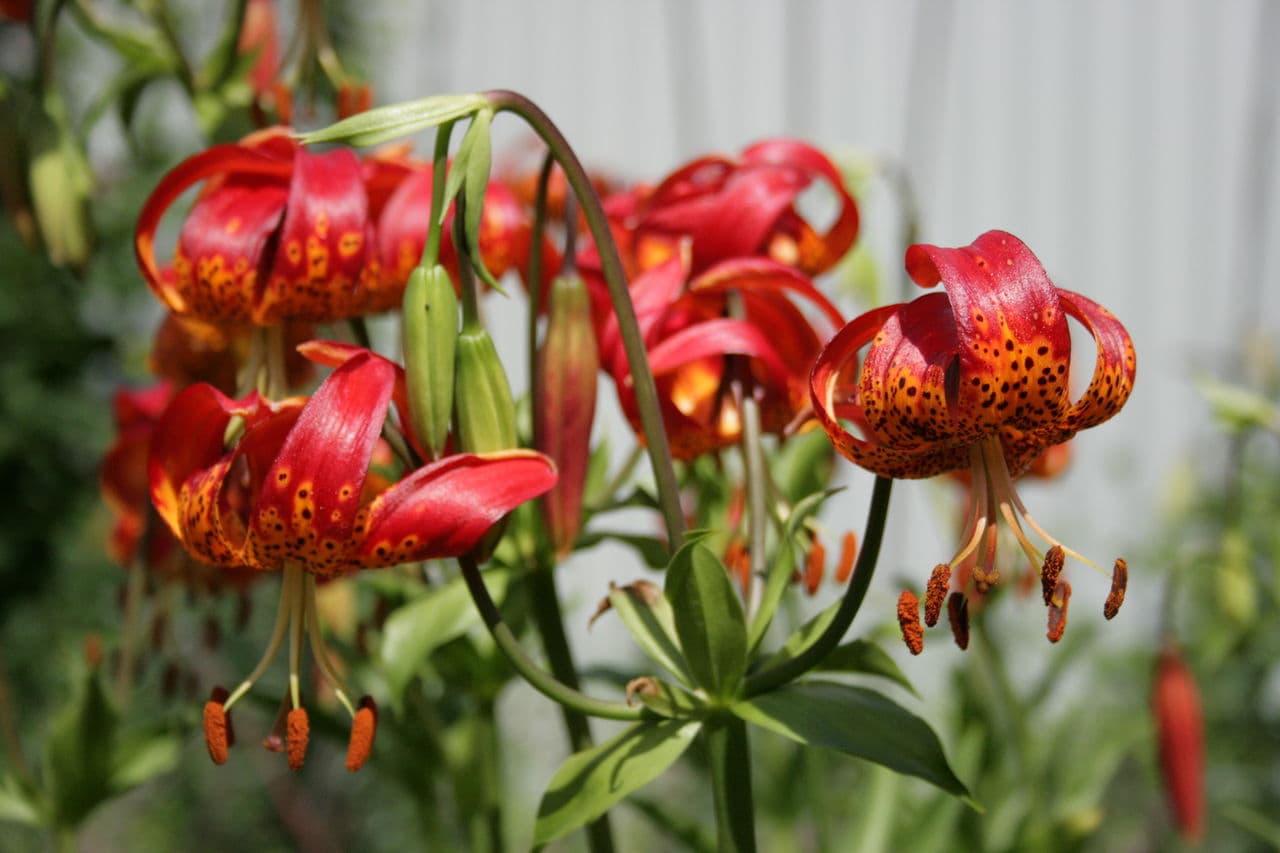 You may be interested in:
You may be interested in:Planting seedlings in the ground
Platicodon requires preparation for planting and caring for it in the open ground also depends on the variety of the plant itself. But despite the varietal affiliation, the landing itself is carried out according to the general scheme:
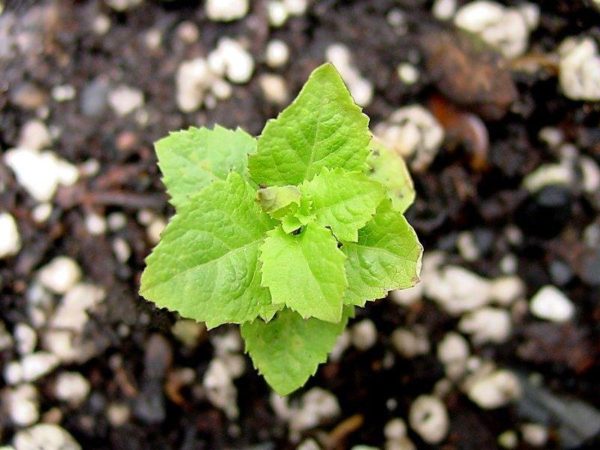
- holes burrow deeper than the size of a cup;
- the distance between them must be kept from 25 to 35 cm, which will allow the bush to grow comfortably without disturbing neighboring ones;
- cups with seedlings must be carefully watered immediately before transshipment into the open ground, this will facilitate the extraction of a lump of earth and prevent damage to the root system of platicodone;
- after planting, the plant is watered abundantly.
Plant care
A wide bell requires regular watering. In addition, the soil around the bushes must be loosened periodically, which allows the plant roots to be saturated with oxygen. It is also necessary to ensure that the weeds do not forget the growth of the bush - they must be regularly weed out.
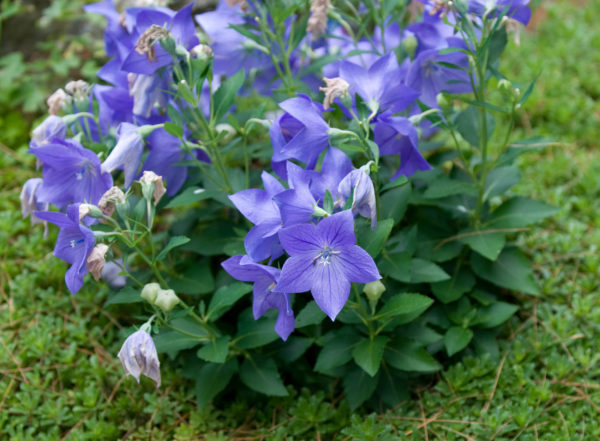
To weed and water Grandiflora less often, it is recommended to cover the soil around the bush with mulch. It is it that will allow moisture to evaporate less and will prevent the growth of weed grass.
You can also just bring in the flowering period or before it sets in special mineral fertilizers for flowering plants. This will improve not only the quality of the flowers, but the abundance of flowering.
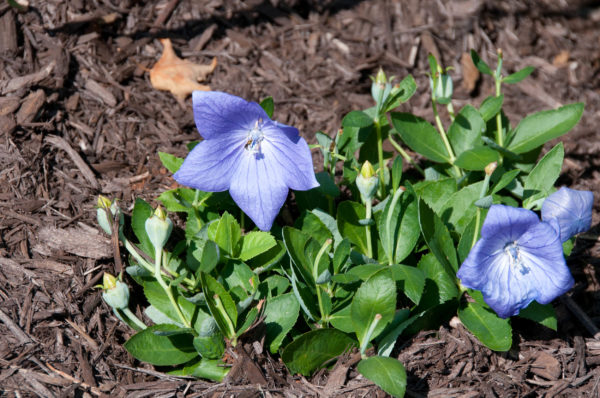
Bush formation
Most varieties of platicodone are tall enough. If your site does not need its long stems, then you can form a bush of the required shape. To do this, regularly pinch the upper long stalk.
But it is important to choose the moment when this manipulation can be done. If the period is missed, you will have to tie up the stem so that it does not fall on its side.
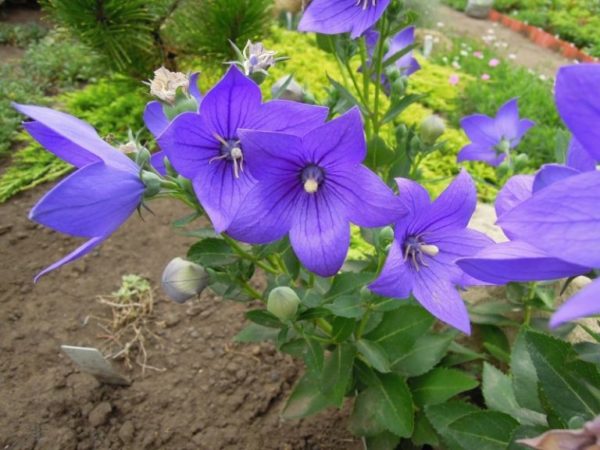
In order to make the bush lower, inhibitors can be used.To preserve the attractive appearance of the plant, faded flowers must be cut off in time.
Wintering plants
In this type of bell, the root system is quite fragile. Therefore, do not transplant the plant from year to year - it must be left in one suitable place, and let it grow up to 10 years.
After the plant blooms profusely, seed boxes will appear in place of the flowers. They form around the beginning of autumn. If necessary, the seeds can be collected and left for planting next year. After this, it is necessary to trim the stem with a peduncle.
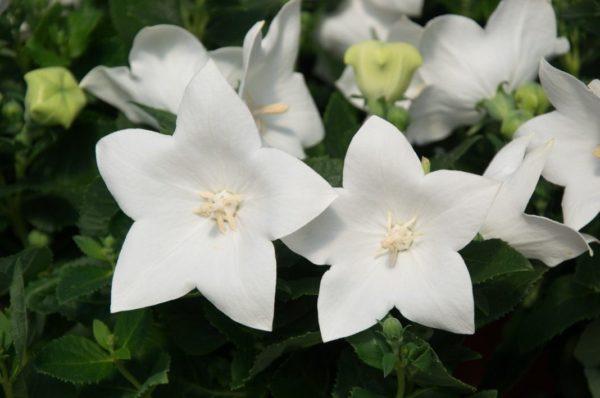
After the first frosts come, the greens will dry out - there will come a stage when it is necessary to cut off all the unfitted withered foliage.
In the middle lane, it is important to protect plants from winter frosts. This can be done by covering the area where platicodone grew with a layer of mulch or yellowed foliage. So the plant perfectly wintered.
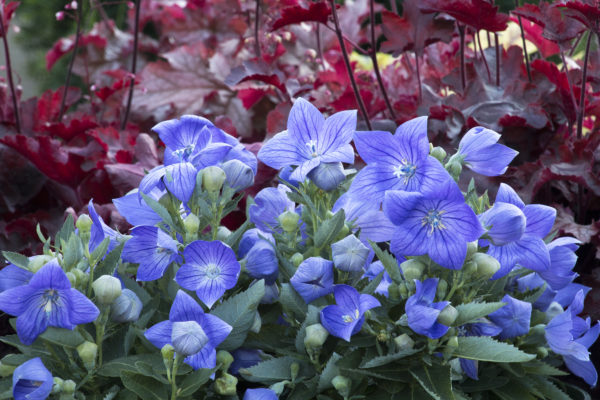
Platikodon varieties and care
Platicodon Astra Pink has two varieties - regular and terry, planting and caring for it in open ground are similar to the methods described above. Since the bushes of this variety are low, approximately 25 cm, most often they do not need pinching.
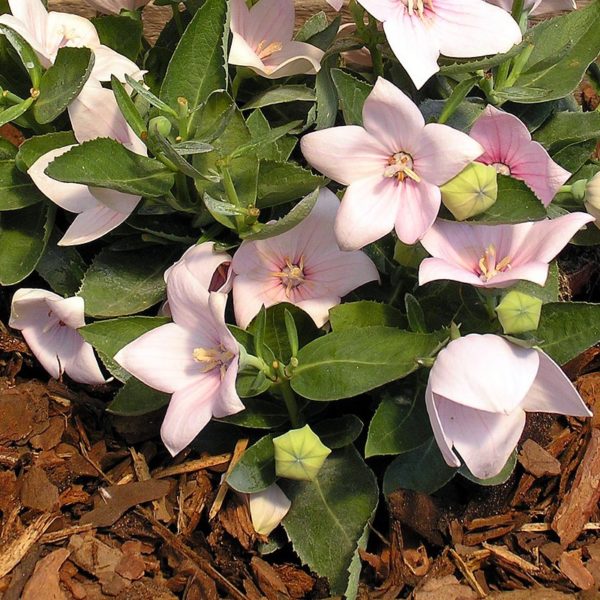
But Fiji's platicodon is distinguished by a rather lush bush, so when planting it must not be placed as compactly as other varieties and leaving in the open ground will consist of tying the branches. It must be remembered that the bush in height can reach half a meter.
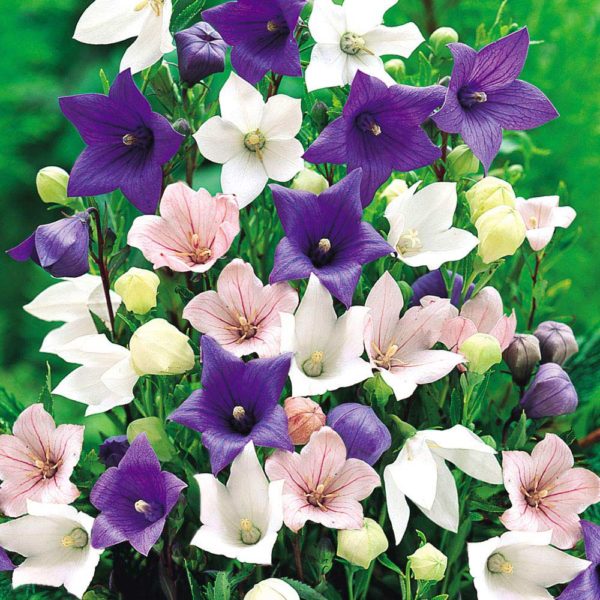
Platicodon Fuji Pink has the original 5-lobed fairly large flowers in the shape of stars. Its bush is wide in diameter and reaches a height of 45 cm. The stems and leaves have a bluish bloom, although this feature is characteristic of many varieties of wide-bell.
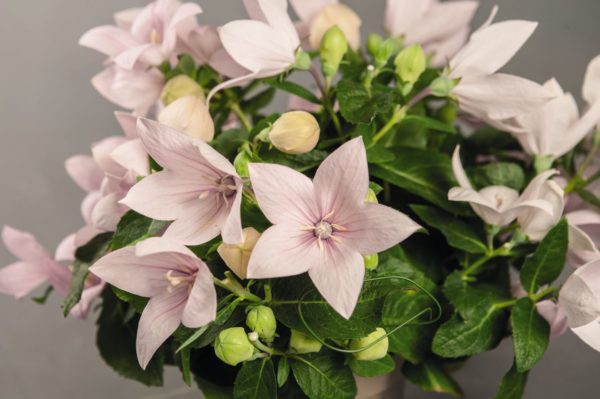
Platicodon Fuji Pink is quite unpretentious when planting, in the open field it requires the same care as all other varieties.
Plant diseases
Should not allow stagnation of moisture in the root system. Otherwise, you will have to transplant platicodon with preliminary processing of the root system and the removal of rotten parts. To combat the disease, you can purchase drugs:
- Chorus;
- Teldor;
- Switch
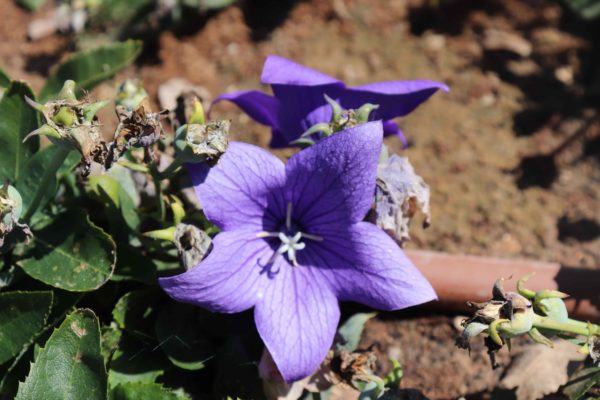
They are able to suppress the development of fungal infection and protect plants from it. Handle the bush in accordance with the attached instructions.
Also, moles or mice can threaten the bush, since the root system is quite juicy and for these rodents it seems very tasty. To eliminate this problem, you need to plant plants with poisonous roots next to platicodone.
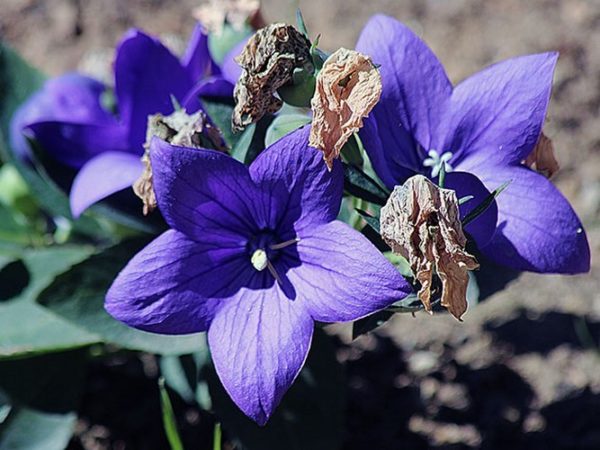
Platicodon of any variety is an original and interesting plant for decorating flower beds and flower beds. It is also used to make decorative bouquets.

 Sow in the ground, without seedlings: 10 beautiful and unpretentious flowers
Sow in the ground, without seedlings: 10 beautiful and unpretentious flowers Platicodon planting and outdoor care
Platicodon planting and outdoor care Hosta - planting and care in the open ground in the Urals
Hosta - planting and care in the open ground in the Urals Oleander - care and growing at home
Oleander - care and growing at home